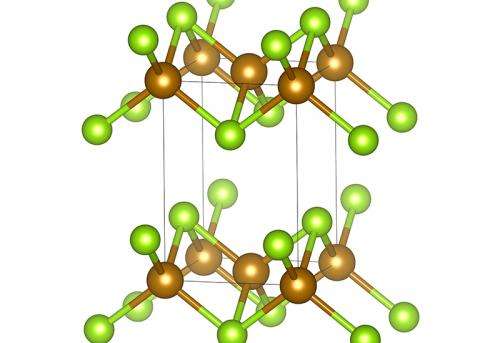Researchers use Mira to peer inside high-temperature superconductors

Researchers from the University of Illinois at Urbana-Champaign (UIUC) are using supercomputing resources at the Argonne Leadership Computing Facility (ALCF), a DOE Office of Science User Facility, to shed light on the mysterious nature of high-temperature superconductors.
With critical temperatures ranging from 30 Kelvin to 130 Kelvin (405 degrees below zero to 225 degrees below zero Fahrenheit), this relatively new class of superconductors is high-temperature in name only. Prior to their discovery in 1986, it was widely believed that superconductivity—a material's ability to transmit electric current with no resistance—could only occur below temperatures of 30 Kelvin.
The discovery of high-temperature superconductors led to countless follow-on research efforts and the identification of several other high-temperature superconductors, but the origin of the materials' unique properties remains elusive.
"We still don't have a universally agreed upon theory for this newer class of materials that are superconducting at higher temperatures," said Lucas Wagner, principal investigator and research assistant professor at UIUC. "The goal of our work at the ALCF is to get us a step closer to understanding these systems."
With an improved understanding of the mechanisms that give rise to high-temperature superconductivity, scientists will be better equipped to design new materials and develop technologies that can benefit from them.
Conventional, or low-temperature, superconductors are currently used in technologies such as magnetic resonance imaging (MRI) machines and particle accelerators, but their real-world applications are limited because the materials require expensive cooling systems, are difficult to work with, and can have less-than-ideal electronic properties.
"It's possible that high-temperature superconductors could ameliorate some of these deficiencies and make other potential applications, such as power transmission lines and electric motors, much more viable," Wagner said.
At the ALCF, Wagner and his team are using Mira, a 10-petaflops IBM Blue Gene/Q supercomputer, to simulate the magnetism of iron selenide, a known high-temperature superconductor, at varying levels of pressure. Their computational study was inspired by experimental work that found iron selenide becomes superconducting at high temperatures when pressure is applied.
Running their QWalk code on Mira, the UIUC researchers carried out quantum Monte Carlo (QMC) simulations of the structure of electrons in iron selenide at an unprecedented level of detail. Thus far, the team's calculations have helped them to better understand the magnetic behavior of the material and why it changes with pressure, providing evidence to support the notion that high-temperature superconductivity is magnetic in origin.
"To put it simply, the properties of electrons are determined by a balance between a tendency to want to spread out, avoid each other, and be close to the nuclei," Wagner said. "In iron selenide, we confirmed that the balance between these three things leads to unusual magnetic character. And that this balance changes with pressure."
The UIUC team's highly accurate simulations of iron selenide would not have been feasible without a massively parallel supercomputer like Mira. Because superconducting materials are strongly correlated systems, predicting their behavior is dependent on calculating the interactions between their electrons. Traditional computational methods, such as density functional theory, average these interactions out, which made it impossible to study such materials with any precision in the past.
However, with the increasing availability of high-performance supercomputers, the computationally demanding QMC method has emerged as an effective tool for explicitly simulating the interactions among electrons, opening the door to new computational research efforts for a broad range of systems that require realistic predictions of materials properties.
As the lead developer of the open source QWalk code, Wagner is at the forefront of QMC research. To help advance his research at the ALCF, he continues to work with the facility's performance engineers to improve the code's performance on Mira. So far, they have been able to increase QWalk's speed by 20 percent.
"We found that a significant amount of time was spent on a portion of the code with a memory-intensive computation pattern," said Vitali Morozov, a principal application performance engineer at the ALCF. "Optimizing the use of data structures for similar operations led to a significant reduction in the stress on memory bandwidth."
Wagner received computing time at the ALCF through the DOE Office of Science Innovative and Novel Computational Impact on Theory and Experiment (INCITE) program. He was awarded a second INCITE allocation in 2015 to continue his studies into high-temperature superconductors.
With the new allocation, Wagner's team seeks to understand the difference between high-temperature superconductors and non-superconducting materials that exhibit similar properties. They will also use Mira to predict new materials with promising attributes. The results will feed into a collaborative effort with the Center for Emergent Superconductivity, a DOE Energy Frontier Research Center (EFRC) led by Brookhaven National Laboratory, where researchers will try to make the predicted materials.
"Ultimately, we hope that our work will lead us to new superconductors," Wagner said. "In addition, the methods and understanding that we are developing here will be applicable to many other critical applications, from catalysis to photovoltaics."
Provided by Argonne National Laboratory




















